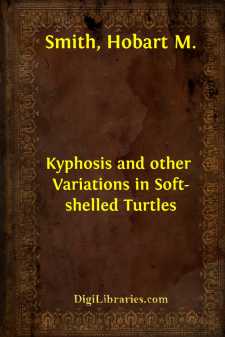Categories
- Antiques & Collectibles 13
- Architecture 36
- Art 48
- Bibles 22
- Biography & Autobiography 813
- Body, Mind & Spirit 142
- Business & Economics 28
- Children's Books 17
- Children's Fiction 14
- Computers 4
- Cooking 94
- Crafts & Hobbies 4
- Drama 346
- Education 46
- Family & Relationships 57
- Fiction 11829
- Games 19
- Gardening 17
- Health & Fitness 34
- History 1377
- House & Home 1
- Humor 147
- Juvenile Fiction 1873
- Juvenile Nonfiction 202
- Language Arts & Disciplines 88
- Law 16
- Literary Collections 686
- Literary Criticism 179
- Mathematics 13
- Medical 41
- Music 40
- Nature 179
- Non-Classifiable 1768
- Performing Arts 7
- Periodicals 1453
- Philosophy 64
- Photography 2
- Poetry 896
- Political Science 203
- Psychology 42
- Reference 154
- Religion 513
- Science 126
- Self-Help 84
- Social Science 81
- Sports & Recreation 34
- Study Aids 3
- Technology & Engineering 59
- Transportation 23
- Travel 463
- True Crime 29
The Tadpoles of Bufo cognatus Say
by: Hobart M. Smith
Description:
Excerpt
The tadpoles of this species have been described by Bragg (Copeia, 1936: 14-20, figs. 1-13; Amer. Midl. Nat., 18:273-284, figs. 1-5, 1937). The drawings and descriptions of the mouthparts, however, appear to have been taken from dried, or immature, or transforming individuals, for they do not agree among themselves nor do they agree with larvae obtained in the field and now in the Museum of Natural History of the University of Kansas.
At hand are two series of tadpoles of this species; one series was collected July 2, 1938, 1.5 miles east of Meade County State Park, Kansas, and the other lacks data. The second lot contains numerous sizes of tadpoles from 14 mm. to 31 mm., and several transforming specimens which clearly possess the pattern so typical of this species.
Fig. 1.—Mouthparts of a tadpole of Bufo cognatus. Disk widely spread.
Approximately × 45.
Mouthparts in both series (consisting all told of about 200 specimens) are fairly constant except in the transforming and extremely young specimens. The accompanying figure shows them as seen with the mouth disk widely spread. The indentations at the corners of the mouth in the papillary fringe are more prominent when the mouthparts are less extended. The outer row of teeth of the lower labium is sometimes a little shorter or longer than the figure shows, but the average is about as indicated. The extent of the medial edge of the papillae on the lower labium varies somewhat; in some, the papillae barely reach the level of the ends of the outer row of teeth, while in others they overlap the ends slightly.
Measurements agree with those given by Bragg, except that appearance of the hind legs occurs at about 15 mm.; the fore legs appear at about 28 mm. A pattern recognizably similar to that of the adult is evident at about 20 mm.
These tadpoles show such a striking similarity to those referred by Wright to Bufo compactilis Wiegmann (Proc. U. S. Nat. Mus., 74:4, pl. 5, fig. 6, 1929) that their conspecificity is suggested. If on the other hand, the specimen figured by Wright is properly identified, then the two species must in reality be very closely related. A direct comparison of positively identified tadpoles of each species is much to be desired.



